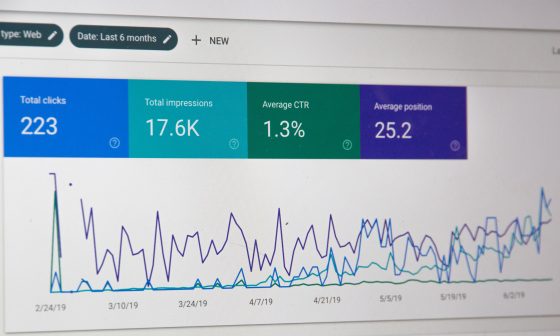Google Ads (formerly Google AdWords) are an inescapable part of our lives, much like the Google itself. If you use Google on a regular basis, then you’ve definitely seen the ads it serves on the top and bottom of its search results. Marketing departments rely heavily on Google Ads to deliver their pay-per-click ads (about 36% of all digital marketing budgets in the USA were spent on Google in 2019, in fact), and if you aren’t doing your due diligence on keyword research before launching out those campaigns, well, you’re missing out on a lot of opportunities.
Today, Performance Marketing is an entire industry by itself, and there are thousands of agencies that specialize in doing this exclusively. While ad optimization requires experience and a deep knowledge of the topic, this blog post deals with just one aspect of it–how you can research and target the right keywords while running Google Ads.
If you know the basics of the Google Ads set-up and optimization, feel free to skip ahead, if not, you should familiarize yourself with some of these terms first.
-
- Landing Page: A landing page is a web page that is created for the purpose of the ad campaign that you’re planning to run. Your landing page should contain information that will help drive the lead to convert for either a purchase or more information CTA. You can learn more about optimizing landing pages here.
- Quality Score: The Quality Score of your landing page is a number that’s assigned on a scale of 1-10 based on the expected clickthrough rate, relevance to the ad, and general copy on the page.
- CPC (Cost Per Click): While sometimes used interchangeably with Cost Per Conversion, your CPC is the amount you are charged when someone clicks on your ad. This is typically how Google search ads work.
- CPM (Cost Per Thousand Impressions): When you’re running display ads, since you are not going to be charged based on the clicks that users make (or don’t make), you’ll be charged per every 1000 views. The amount you are charged is called your CPM.
- Cost Per Conversion/Action (CPCon/CPA): The cost per conversion is an important metric you’ll have to calculate to see how much you’re spending for each goal conversion. The conversion/action could be anything that you deem as the goal for your campaign. Direct to purchase, appointment bookings, & inquiries for more information are common goals that marketers set for their ad campaigns.
- Bidding: When you’re running ads on Google, you need to set a bid amount to let Google know how much you’re willing to pay for your ad. You can either set this up manually or allow Google to optimize this based on your goals. You can read more about manual CPC bidding here and automated bidding here.
- CRO (Conversion Rate Optimization): Once you start running ads, you’ll want to make sure your corporate credit card isn’t bleeding cash. While automated bidding can help you here, you can work on changing the ad copy, targeting different keywords, changing the design of the landing page, and the position/verbiage of your CTAs to improve the conversion rate of your ads. An umbrella term for these activities is CRO.
You also need to know the types of keywords that you can bid on before you run an ad campaign. In a broad sense, keywords can be categorized as follows:
- Branded Keywords: Keywords containing your brand’s name. For example, if you own a franchise outlet of a shoe store called Kicks’R’Us, then “Kicks’R’Us 7th Street Reviews”, or “Kicks’R’Us Air Max 97 Price” would be branded keywords
- Competitor Keywords: If you have a competitor called Shoes4U, then a competitor keyword would be something along the lines of “Shoes4U buy” or “Shoes4U offers”.
- Generic Keywords: Generic keywords are terms that are directly related to the product or service you’re selling. If you own a shoe store, then “running sneakers”, “hiking boots”, etc. are generic keywords.
- Related Keywords: Related keywords are terms that don’t reflect the products or services you are selling, but your target audience will be interested in. For example, if you own a shoe store in Minneapolis and sell running sneakers, a phrase like “running trails in Minneapolis” is a related keyword.
Now that we’ve covered the basics, let’s dive into how you can do keyword research for your Google Ads.
Step #1: Start with your gut
The first step is to come up with a bunch of keywords that you believe are closely associated with your brand and people are interested in. Generic keywords are always a good place to start. You can always add more words to the mix if you’re interested. Let’s use the optical field for example. Here’s a shortlist that I came up with.

Once you have a list of primary keywords, you can work on building this list out.
Step #2: Look at Google Search Console
A good place to start expanding your keyword list is your very own Google Search Console. If you haven’t used Google Search Console before, you can learn more about it here and work on setting it up.
If your Google Search Console has already been set up, you can start by looking at the keywords that seem to be bringing in traffic to your website. In the sidebar, click on performance and scroll down to see the queries that are already fetching you traffic. Add all the keywords that capture your attention to your list.

Step #3: Use the Keyword Planner tool
While Google Search Console only gives you an idea of the keywords for which you’re already able to rank and capture customers, Google’s Keyword Planner gives you an idea of the hottest keywords in your space. Open up Keyword Planner on your Google Ads account and enter the list you’ve jotted down thus far in the Keyword Ideas bar. This will show you metrics and broadly related search terms.

(Source)
You can download the keyword ideas that Google gives you right from that page. The first thing you need to look at is the keyword volume. The Keyword Planner tool displays the number of monthly searches that people make for a certain search term, and you can further break this number down based on the location, language, etc. The Google Monthly Searches (GMS) number is an important one because of two things. a) It gives you an idea of what people are really searching for, and b) it helps you eliminate keywords that don’t have a substantial search volume.
Once you have the list, spend a good amount of time poring through the keywords suggested by Google. You can also look at how competitive the keyword is, and a rough idea of how much you’ll have to bid to get on to show up for the respective search term on this list. Pick all the terms that are relevant and add them to your list.
Step #4: Shuffle ‘em up
By now, you should have a substantial number of keywords on your list. To widen your net even further, you can run keyword combinations through a keyword shuffler tool like this one to come up with more combinations of keywords.
Here’s an example of how you can use this tool to build more narrow, focused keywords for your list.


Step #5: Optimize for voice search
The last item on the checklist is to throw a few voice-search-optimized keywords into the mix. Voice search queries differ from normal text searches, and you need to take that into account when you’re building keywords for Google Ads.
For example, someone searching for hiking trails in Minnesota would search for “Minnesota hiking trails” on Google’s text search but might say “ok google, show me some hiking trails in Minnesota” while running a voice search. Unless you’re running ads for exact match searches, Google Ads covers most variations of keywords that you’re bidding on. Even so, putting yourself in the shoes of your audience and coming up with voice search keywords pertinent to your product or service is a good practice.
Voice search and voice assistants are getting more and more common as the consumer-preferred channel. So while you are thinking about voice search optimization, consider optimizing your website and profiles for voice search as well. That way you are getting more eyeballs on your content, and ultimately, your brand and products.
Et Voila!
And there you have it, your list of keywords! Once you have this list, you can group them together as you wish on the Google Ads platform and start bidding on your keywords.
Remember what we discussed at the beginning of this article– keyword research is just one aspect of running Google Ads, and learning how to optimize your ads and landing pages is a whole different ball game altogether. If you’d like to learn more about that, check out this blog post.


